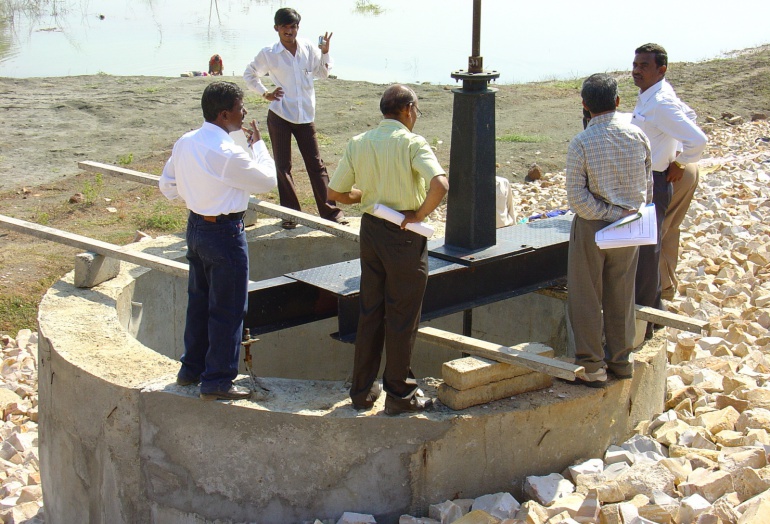There is a long tradition in Maharashtra with community-based small-scale irrigation. Evaluating past and present performance of the minor irrigation sector, KfW and the Government of Maharashtra have agreed to launch the Minor Irrigation Programme – Maharashtra (MIP-M). MIP-M is a rural development programme with facilitating communities to plan, construct, manage and profit from new irrigation schemes with command areas of up to 250 ha.
MIP-M is designed in two phases. A 4-year Pilot Phase, from February 2001 to January 2004, followed by a 5-year Main Phase. The programme activities comprise the construction of small dams, weirs, canals and drains, water lifting facilities, water conservation measures, planned and implemented with the active participation of farmers organised in water user associations (WUA). Under MIP-M, WUAs are formed and assume full responsibility for the operation and maintenance (O&M) of their scheme, including the headworks. This is a major departure from conventional irrigation development practice in Maharashtra, where the Government retains responsibility for O&M of the headworks.
The types of schemes being developed under MIP-M are:
- Minor Irrigation Tanks: These are reservoirs created by an earth dam with capacities of up to 2 million cum. Dam heights are typically less than 20 m in height and irrigation is by gravity through an open canal distribution system.
- Kolhapur Type Weirs: These are masonry structures built across a river that store water within the banks of the river channel itself Water is lifted by pumps onto the adjacent fields for irrigation.
- Diversion Weirs: These are similar to KT Weirs except that water is released by a gravity canal to fields downstream of the weir. These weirs are suited for construction on rivers with perennial flows.
- Storage Tanks: These are similar to MI Tanks but water is required to be pumped for irrigation. Note: Storage tank schemes were not around at the time of MIP-M Preparation Study in 1996 and therefore were not included. The development of such schemes occurred only in the late 1990s and included under MIP-M during the inception period.
Services Provided
Provision of national and international long-term and intermittent short-term advisory services and training to strengthen the technical, operating and management capacity of the RD&WCD, NGOs and other relevant actors. Specific tasks comprised:
- Project identification, planning and sanctioning of schemes;
- Mobilising of WUAs for active programme participation (ownership building);
- Support to NGOs promoting the participation of WUAs;
- Preparation of tender documents and tender evaluation; assistance in awarding of contracts,
- Control of works in qualitative and quantitative terms;
- Promote the active involvement and ownership building of WUAs and the active participation of qualified NGOs in the participatory approach
- Monitoring and evaluation of progress and programme impact;
- Preparation of tender documents and evaluation of contractors’ bids
- Selection of equipment and vehicles; tender procedures and procurement
(joint venture – lead firm)



